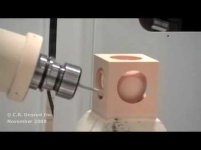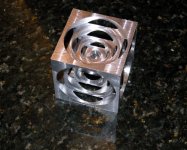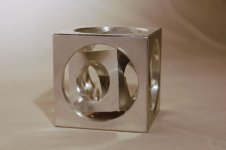savageman101
Member
I'm a 70 yr old retiree that has had 2 jobs over the past 54 years. The last one being 28 years in the machine shop and Sheetmetal fabrication business and hobby. Love taking things apart and making stuff.
I buy/sell and collect Old Model 94 Winchesters. To date I've disassembled and rebuilt 35 to 40 rifles/carbines.
The last one I completed just yesterday was a Winchester 94
30 WCF (30-30) 26" Rifle made in 1915. I'll add pics later.
That rifle sold for $24 to $32 bucks at your local hardware store as a tool in 1915 and the 4 or so craftsman that made this rifle were on average making $687 "A YEAR" each. In current dollars about $18,000 a year. If it sold for $30 retail, then it was manufactured for $8 or less.
Their EDM machine was two guys or gals named Bob and Sarah and both had "Mad" filing skills. They were Happy to have a job and proved it every day in the Quality of their Craftsmanship. Average work week 6-10 hr days.
Times change and unfortunately this Dedication and Quality Craftsmanship has disappeared at "ANY" price.
I buy/sell and collect Old Model 94 Winchesters. To date I've disassembled and rebuilt 35 to 40 rifles/carbines.
The last one I completed just yesterday was a Winchester 94
30 WCF (30-30) 26" Rifle made in 1915. I'll add pics later.
That rifle sold for $24 to $32 bucks at your local hardware store as a tool in 1915 and the 4 or so craftsman that made this rifle were on average making $687 "A YEAR" each. In current dollars about $18,000 a year. If it sold for $30 retail, then it was manufactured for $8 or less.
Their EDM machine was two guys or gals named Bob and Sarah and both had "Mad" filing skills. They were Happy to have a job and proved it every day in the Quality of their Craftsmanship. Average work week 6-10 hr days.
Times change and unfortunately this Dedication and Quality Craftsmanship has disappeared at "ANY" price.
Last edited:



